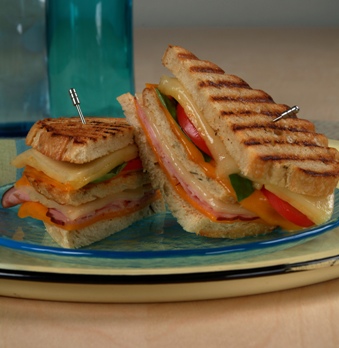50-Minute Classroom: Teaching Students How to Plan Their Cooking
17 December 2009By Adam Weiner
 Letting students fail a few times before showing them the tricks of the trade will make them more receptive.
Letting students fail a few times before showing them the tricks of the trade will make them more receptive.
I teach my students that there are five Ps to professional cooking: Planning, Preparation, Presentation, Passion and Pride. Last year in the January/February issue I wrote about presentation, so I am a bit out of order on how to teach planning.
In a restaurant without good planning, the food will never go out to the customer in a timely manner. Planning is key in large operations such as hotel banquets, the military and hospitals. Caterers fail or succeed based upon their planning. Yet, we often fail to teach planning in our classrooms. Given limited class time, there is always the push to get the students cooking as soon as possible, so they can cook, eat, clean up and move on to their next class on time.
The key to planning in cooking is to have a menu and a timeline. I have learned that if I teach timelines and organization plans upfront, the students’ eyes glaze over and their mouths start to yawn while reaching for their phones to text someone about how boring I am. I now know that it is better to let students fail a few times before showing them the tricks of the trade, because they will be more receptive.
Start with something simple: macaroni and cheese out of the box, quartered peeled apple, grilled-cheese sandwich and a cold glass of milk. At presentation time, point out the brown apples (that were peeled too early), the warm milk (poured too soon), the cold sandwich (made to early) and the runny mac and cheese (started too late.)
The next class period, give the same assignment but tell the groups they cannot start cooking until they have handed you a timeline showing the menu on top and the class broken down into five-minute increments. Start them off with the first entry, which is at the END of the timeline: when the food needs to be presented. Then working backwards, food item by food item, the students should fill in what needs to be started when. The key to success is working backward from when everything needs to be presented.
Next, it is time to teach multiple day planning. Tell your students the trick is to figure out what can be done ahead of time without sacrificing quality. Assign a meal due on the last day of the week with some items that can be prepared ahead of time, some with parts that can be prepared ahead of time, and some that must be done at the last moment.
For example, Caesar salad with homemade dressing, club sandwiches, pasta salad and cookies. Have your students use a timeline that not only covers the minutes of class on the presentation day, but also includes the previous days, as well. Let your students plan doing the dressing and pasta salad several days early. Let them see how some ingredients can be prepared for the club sandwiches and the cookies the day before, and that very little cooking is needed on the last day.
Thus, you have taught your students how planning and preparation makes it possible to prepare, serve and clean up a large multi-course meal in a small amount of time. This will help prepare them for professional cooking.
Chef Adam Weiner teaches a 20-week Introduction to Cooking program for JobTrain and the Sequoia Adult School on the San Francisco Peninsula.
Photo caption: The California Cheese Club Grill reinterprets the classic grilled-cheese sandwich with two types of Monterey Jack, which was created in the Golden State more than a hundred years ago. Photo courtesy of the California Milk Advisory Board.
